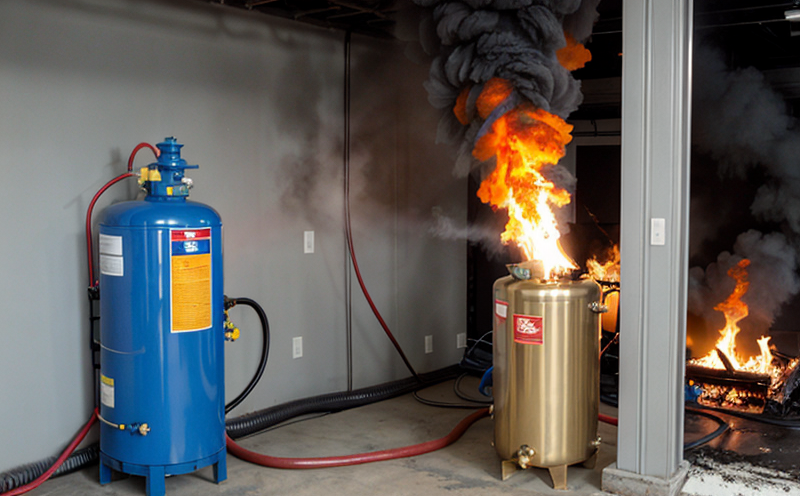Marine Vessel Fire Suppression System Testing
The testing of fire suppression systems on marine vessels is a critical component in ensuring maritime safety and compliance with international regulations. The objective is to verify that the installed fire suppression systems perform effectively under simulated conditions, which can help prevent fires from escalating into full-blown emergencies at sea.
In this context, we focus specifically on testing the fire suppression system within marine vessels. These tests are essential for confirming that the system’s design and components meet regulatory requirements and ensure operational reliability in critical situations.
Fire suppression systems aboard marine vessels typically include water-based extinguishers (like CO2 or foam), halon systems, and dry chemical systems. Each of these has its unique application depending on the type of fire expected within a vessel. For instance, CO2 is used primarily for electrical fires while foam is effective against class A fires involving combustible liquids.
The testing process involves replicating real-world scenarios where the system might be called upon to operate. This includes simulating different types of fires that could occur on board, such as those started by electrical faults or fuel leaks. By doing so, it ensures the system can respond appropriately and efficiently when faced with an actual emergency situation.
Our testing facility uses advanced equipment and methodologies tailored specifically for marine environments. Our experienced team employs stringent procedures to ensure accurate results that reflect both theoretical performance expectations as well as practical outcomes under challenging conditions.
To begin, we first review the design specifications of your vessel’s fire suppression system to understand exactly what needs to be tested. From there, we prepare appropriate samples or models representing various parts of the system for inspection and evaluation.
Once all preparations are complete, our technicians conduct rigorous tests on each component using controlled environments that mimic potential hazards found at sea. These evaluations cover everything from initial detection mechanisms (like heat sensors) to delivery systems (spray nozzles).
We also pay particular attention to the interactions between different elements of the system during testing - ensuring they work seamlessly together as intended. This holistic approach helps identify any weaknesses or areas needing improvement before deployment.
Finally, upon completion of our thorough assessment, we provide detailed reports outlining our findings along with recommendations for necessary adjustments if required. Our goal is not only to meet but exceed industry standards so that you can have peace of mind knowing your vessel’s fire safety measures are robust enough to protect lives and property.
Applied Standards
| Standard Number | Description |
|---|---|
| ISO 16983:2015 | Fire testing of building materials and products - Tests for fire resistance of doors, windows, and shutters. |
| EN 457-1:2012 | Water mist fire-extinguishing systems - Part 1: General requirements. |
| American Bureau of Shipping (ABS) Rules | Specific guidelines related to fire protection for ships and offshore structures. |
| Lloyd’s Register (LR) | Standards applicable to various aspects including structural integrity, operational safety among others relevant to marine firefighting systems. |
Why Choose This Test
Comprehensive Coverage: We offer a full range of tests designed specifically for the unique challenges posed by fire suppression in maritime settings. From initial detection through to discharge, every stage is evaluated to ensure optimal performance.
Expertise and Experience: Our team consists of highly skilled professionals with extensive knowledge about both theoretical principles as well as practical applications when it comes to marine vessel fire safety.
Regulatory Compliance: By adhering strictly to internationally recognized standards like ISO, EN, ABS, and LR, we guarantee that your tests meet all applicable requirements ensuring smooth passage through certification processes.
Quality and Reliability Assurance
Stringent Quality Control Measures: From sample selection to final report generation, each step follows strict protocols designed to maintain high standards of accuracy and consistency.
Detailed Reporting: Comprehensive documentation detailing all aspects of the test process including any deviations from expected behavior along with suggestions for improvement.





